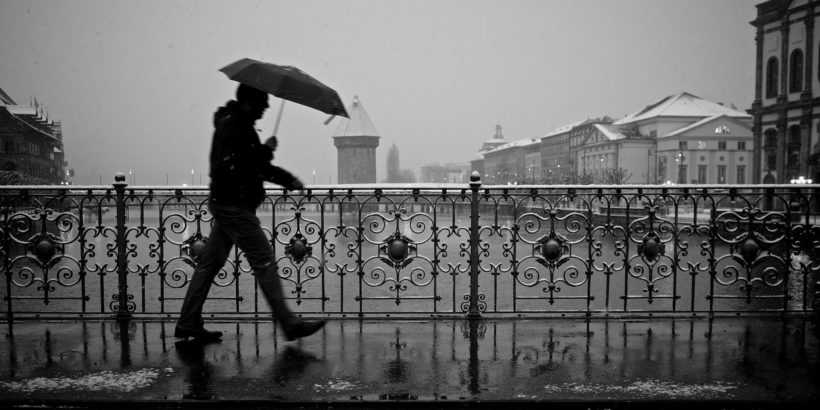 By MIRIAM ACZEL
By MIRIAM ACZEL
As a PhD student studying climate change and impacts of fossil fuels on the climate, I’m interested in public engagement, and how best to explain the differences between the complex long-term changes on our climate, such as increasing levels of atmospheric carbon dioxide and warming temperatures, and the shorter term fluctuations. In other words, what exactly is the difference between climate and weather, and what’s the relationship between the two? Recently, I saw an episode of Dr. Neil Degrasse Tyson’s Star Talk, which addressed this issue in an engaging manner.
Dr. Tyson’s Star Talk, which he describes as the “collision of pop culture and science,” explained the science of weather climate change: tracking storms, predicting safety, and the future of earth and its complex and interrelated weather and climate systems.
In this episode, Tyson interviewed National Oceanic and Atmospheric Association (NOAA) Administrator Kathryn D. Sullivan, as well as actor and comedian Scott Adsit, Columbia University climate scientist Radley Horton, astrobiologist David Grinspoon, and Bill Nye, the beloved ‘science guy.’
Dr. Tyson shares clips from his interview with Dr. Sullivan, a former astronaut and the first woman to ‘spacewalk.’ He asks her about the Apollo Era, which she explains “got us to think about the earth and oceans, thanks to iconic images from space.” In addition, the US’s National Environmental Protection Agency (EPA) was established in the 1970s, so the decade really set the stage for the beginning of environmental protection and awareness.
Dr. Tyson returns to his live guests, and adds that NOAA, as an organization, is the first time we “get the ocean and the atmosphere combined in the same sentence.” Dr. Horton explains that “the earth is a coupled, linked system—seeing the first images of the earth [after the Apollo mission] was a key part of the environmental movement.”
Referring to the difference between climate and weather, Dr. Horton comments that the “waves in the atmosphere—the location of large scale waves [such as the jet stream] impact the small scale.” In light of this, the “iconic images” that we saw from the Apollo Mission showed that the earth is truly a “linked system.” This system—a series of pockets of air that “move coherently”– in turn impacts low pressure systems, thus leading to a “connection across large and small scales.”
Dr. Horton further explains that the jet stream is due to a temperature contrast between the equatorial regions with their greater amount of incoming solar radiation, and the polar regions, which exist at higher latitudes. Because of this phenomenon, an “instability forms, and the wave energy propagates”—causing a global movement of wave energy.
Thinking of the earth as a system, with linkages between each of the system’s functions is particularly important, especially in light of increasing extreme weather events. This past winter, I remember reading a tweet from President Trump in response to the snow: “Large parts of the Country are suffering from tremendous amounts of snow and near record setting cold. Amazing how big this system is. Wouldn’t be bad to have a little of that good old fashioned Global Warming right now!” This is in line with one of his previous tweets, tweet: “They changed the name from “global warming” to “climate change” after the term global warming just wasn’t working (it was too cold)!”
But cold weather does not disprove the fact that the climate is changing, rapidly and drastically. Weather only refers to short-term changes in the atmosphere. Climate describes what the weather is like over a long period of time in a specific area—and weather patterns like record levels of snow are actually evidence of a changing climate.

According to Climate Reality Project, many of the most common questions they get are related to climate change and rain or snow. They explain:
“As the atmosphere gets warmer, it can hold more moisture. The intensity of downpours (and therefore the risk of floods) depends in part on how much water the air can hold at a given time.
The rate of evaporation from the ocean is increasing as the world warms. Think about heating a large pot of water on your stove – the higher you turn the dial, the faster the water evaporates. Pretty much the same thing happens with the planet, and globally, this higher rate of evaporation contributes to more extreme rain and snow events. “
Climate change means more extreme weather patterns, stronger storms, higher risks of natural disasters. Scientific American responded to a reader question about the snow and ice storms occurring across the country last winter in an EarthTalk article:
“Most scientists agree that we need to differentiate between weather and climate. The NOAA defines climate as the average of weather over at least a 30-year period. So periodic aberrations—like the harsh winter storms ravaging the Southeast and other parts of the country this winter—do not call the science of human-induced global warming into question.
The flip side of the question, of course, is whether global warming is at least partly to blame for especially harsh winter weather. As we pointed out in a recent EarthTalk column, warmer temperatures in the winter of 2006 caused Lake Erie to not freeze for the first time in its history. This actually led to increased snowfalls because more evaporating water from the lake was available for precipitation.”
And this is exactly why we need more media coverage and programs that deal with the biggest questions about the climate. I remember as a kid listening, mesmerized, to Bill Nye explain why we have seasons, how our brains work, where volcanoes come from, or all the awesome things we know about dinosaurs. His excitement and passion was contagious, and inspired a generation of kids to believe that science is cool, and to keep asking questions if their own. And yes, I am quite thrilled about his new Netflix series, which has a strong focus on climate change.
The feedback systems within the earth and the climate are complex. Because of these linkages between the earth’s systems, increased levels of greenhouse gases in the atmosphere lead to changes in the climate, causing sea level rise as well as droughts and desertification in some places, and severe flooding and intense precipitation in others, in addition to more violent and energetic storms.
It’s crucial to engage in these conversations and share new research. Our understanding of climate change is continually improving as we collect more data and information. We can harness the power of citizen science to better understand both long- and short-term changes, enhance our climate models, and improve our chances of mitigating the detrimental impacts of climate change. Citizen science mechanisms can therefore play an important role by giving everyone the opportunity to participate in important ongoing scientific research—such as collecting data on bird populations and diversity, or collecting data on weather and precipitation—as well as help enhance public understanding of science. Tackling climate change will involve more than just scientific interventions, and it’s important that our media outlets, television shows and radio programs, podcasts and every day conversations provide opportunities for conversations and learning.
Miriam Aczel is a President’s Scholar PhD Candidate at Imperial College London’s Centre for Environmental Policy. Her research is on international energy science and policy, with a focus on mitigation of environmental and health impacts of shale gas, greenhouse gas removal technologies, and citizen science and public participation mechanisms. She is also co-founder and co-director of the Amir D. Aczel Foundation for Research and Education in Science and Mathematics, a nonprofit supporting educational programs in Cambodia and beyond.
Miriam is Director of Communications and blog editor for Leaders in Energy.



Leave a Reply